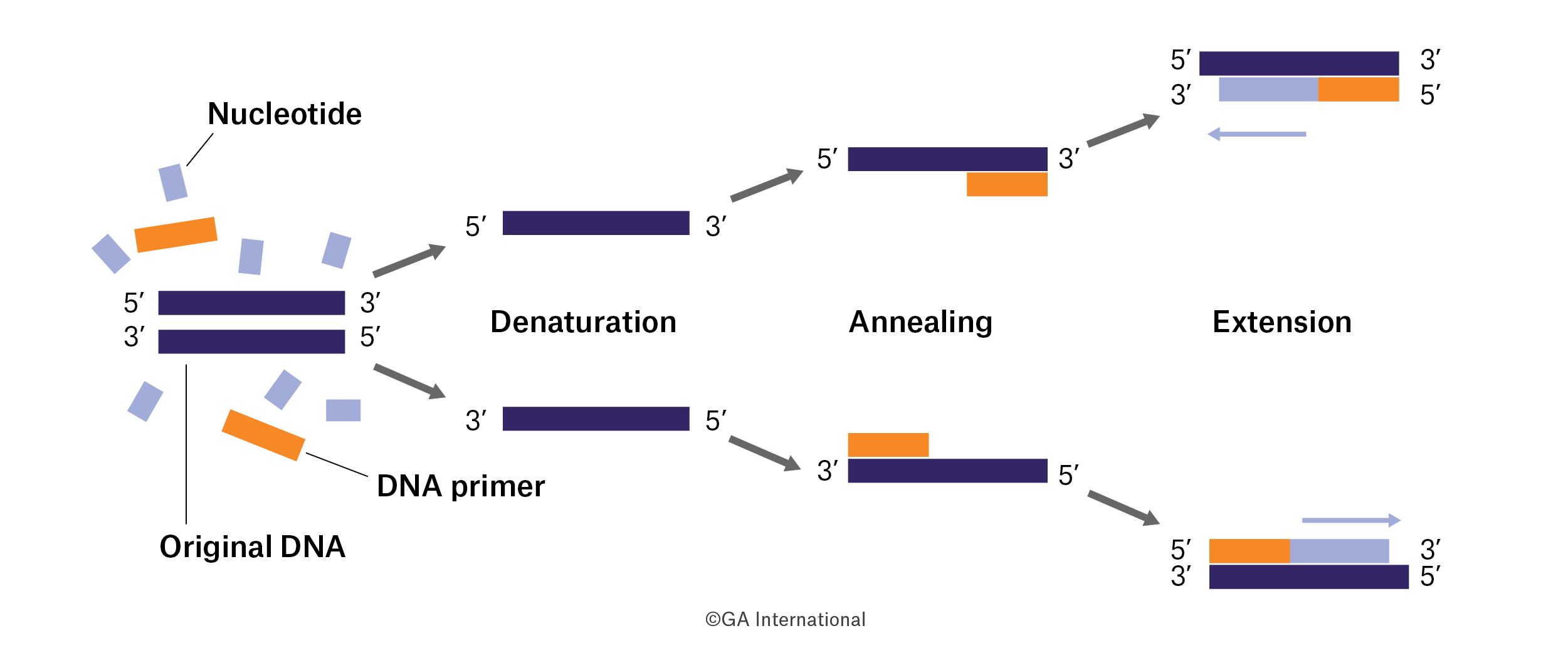
PCR allows scientists to choose which parts of DNA they want to make billions of copies. It is a device that can rapidly (in seconds), and precisely, raise or reduce the temperature of the samples stored in it. All the components are mixed in a PCR tube and put into a thermocycler for making multiple copies of DNA. These are small tubes designed to process the PCR. This provides a suitable chemical environment for the DNA-Polymerase to work. Taq polymerase is a heat-stable enzyme which comes from the bacterium Thermus aquaticus. They are catalysts and their job is to speed up the chemical reactions. Enzymes are important proteins made by the cells of plants and animals. The DNA polymerase is an enzyme which attaches to the DNA template and makes new strands of DNA by adding complementary nucleotides (A,T,G, and C). The nucleotides (A, T, C, and G) serve as the building blocks of DNA and are needed to make new copies of DNA. Similarly, G (Guanine) pairs with C (Cytosine). For example, if DNA template has nucleotide A (Adenine) then the primer strand will have nucleotide T (Thymine) to pair with it. Complementary sequence means they pair with the opposite nucleotides of the DNA strand. Primers are short single-stranded DNA fragments having complementary sequences to the template. Here are the most important components needed to make multiple copies of DNA in PCR: DNA template or SampleĭNA sample or DNA template is the particular DNA that you want to copy. As a result, it is among the most often used techniques in genetic laboratories throughout the world, making it valuable in a multitude of studies, including the detection of hereditary disorders, the identification of genetic fingerprints, the diagnosis of infectious diseases, and plant breeding. This method will ultimately generate a billion or more copies in a matter of a few hours. Scientists then manufacture a modest number of copies to be effective, thus they will employ PCR to generate a sufficient number of copies to begin experimenting with. Because DNA is unique to every living thing, scientists may frequently extract small segments of DNA of interest from a sample. In biological laboratories, PCR is a straightforward, quick, and low-cost technology. PCR revolutionized DNA research to the point that its inventor received the Nobel prize in Chemistry in 1993. Kary Mullis, an American scientist, invented this procedure in his research in 1983 that was one of the greatest significant achievements in molecular biology. They use a technology called PCR (Polymerase Chain Reaction).

Likewise, biologists often need to make a large number of copies of genetic material. In schools and offices, copy machines are very helpful since they can quickly duplicate pages from all types of sources. Did you know that DNA can be photocopied?


 0 kommentar(er)
0 kommentar(er)
